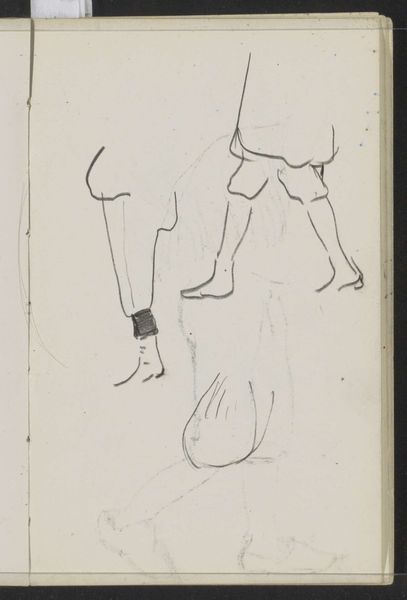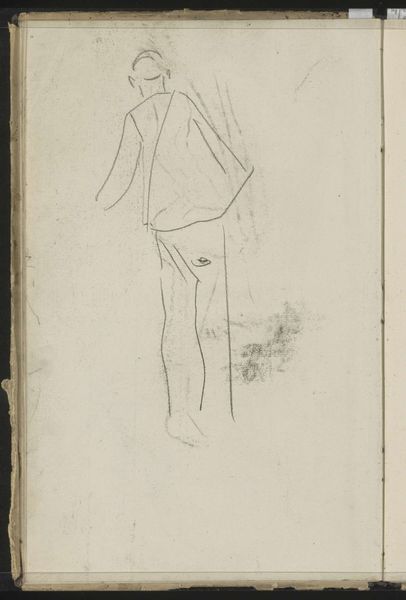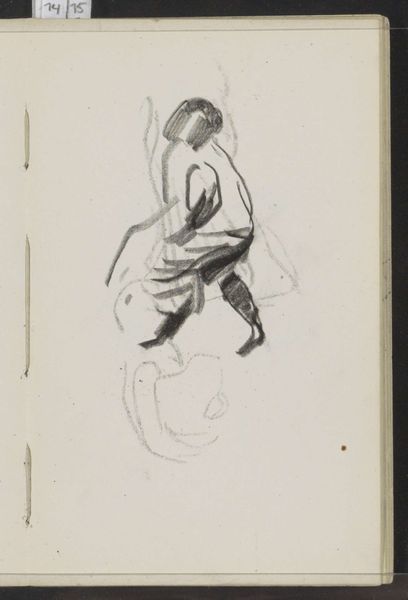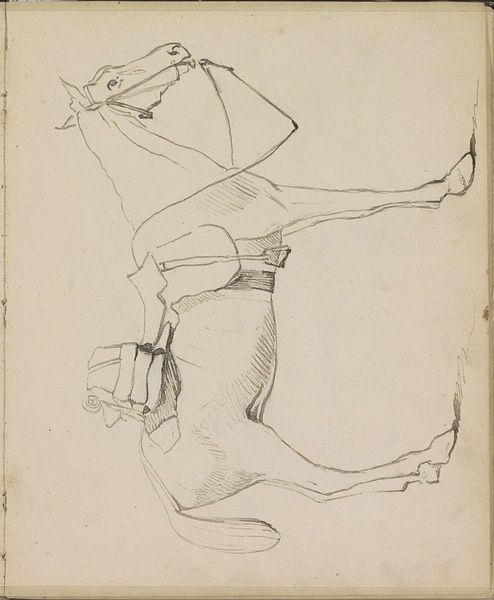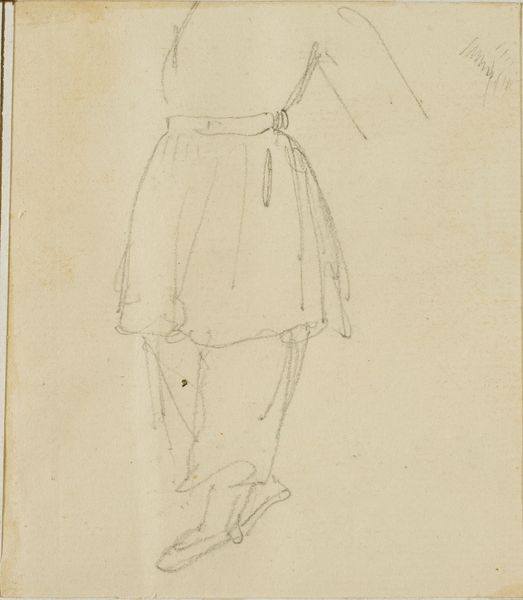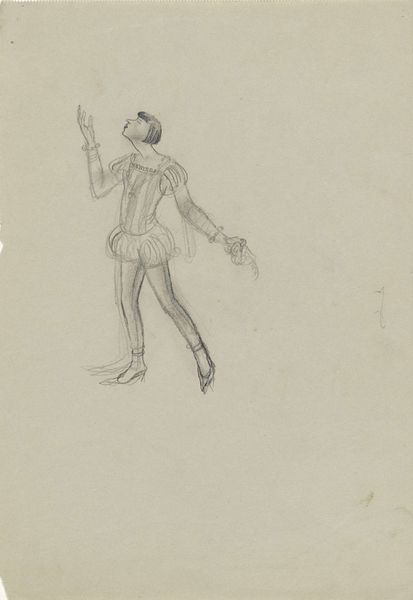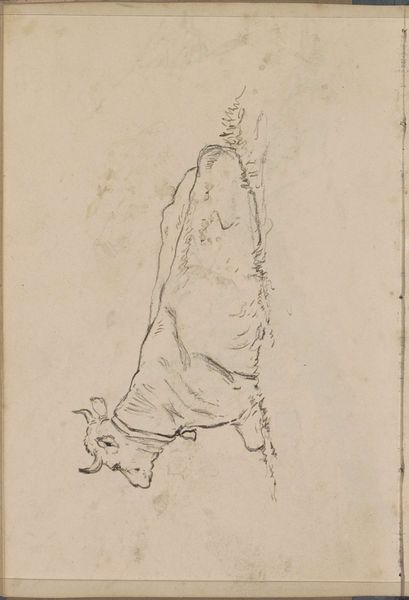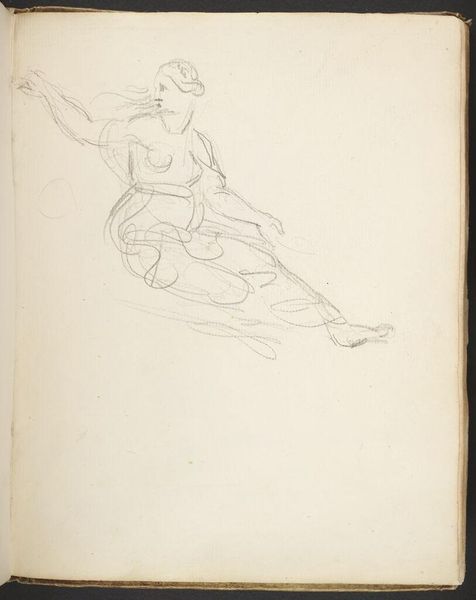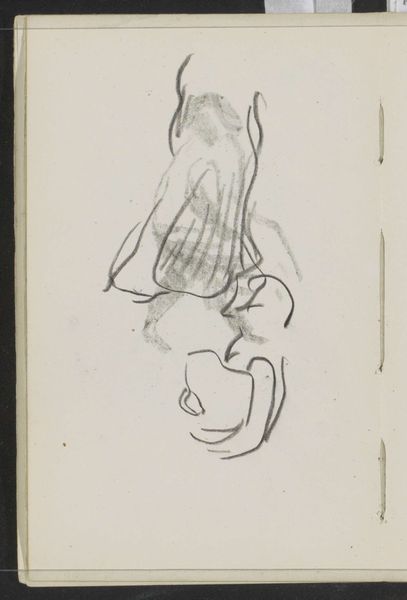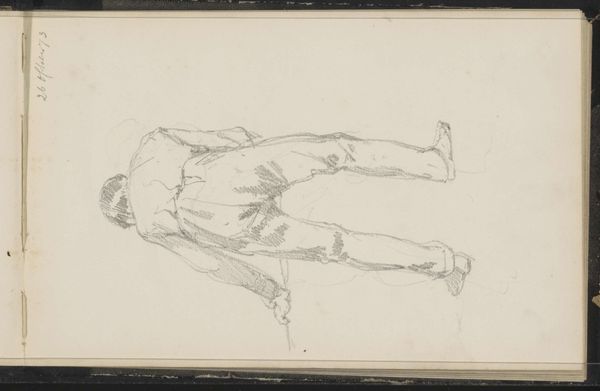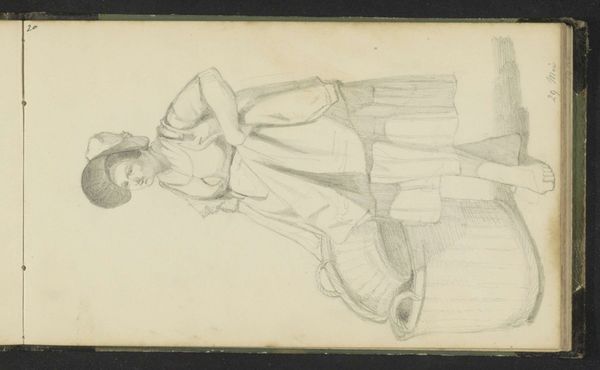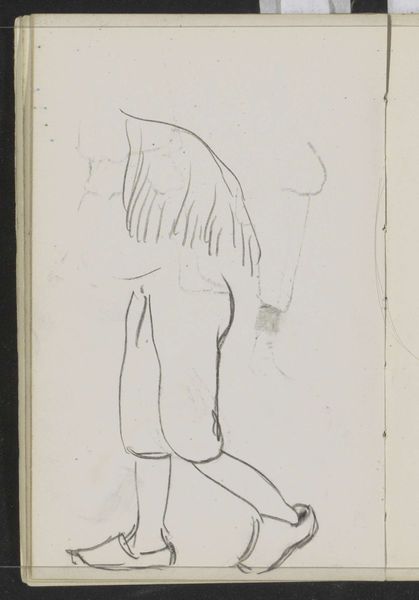
Copyright: Rijks Museum: Open Domain
Editor: This is a pencil drawing called "Been," created sometime between 1874 and 1945 by Carel Adolph Lion Cachet. I find it fascinating how little detail there is, yet you can still understand the scene. It appears to show someone riding a horse, but everything is suggested, rather than explicitly defined. What do you see in this piece? Curator: This drawing speaks volumes about representation, doesn't it? It challenges the conventional power dynamics inherent in equestrian portraiture. Typically, these paintings reinforce societal hierarchies by glorifying the rider, often a figure of authority. Here, however, Cachet focuses instead on the act of riding. Consider the context: from the late 19th to mid-20th century, the colonial equestrian carried associations with authority and land ownership. How might this more pared-down presentation serve as a commentary on these histories? Editor: So you're saying the lack of detail might actually be a statement about power? That by not fully defining the rider, Cachet is questioning the traditional image of authority? Curator: Precisely! He seems less interested in celebrating individual power and more in examining the activity and perhaps the changing status associated with it. Notice, too, the use of pencil, a more accessible medium compared to oil paints, used mostly by the upper classes. Who has access and why? Is this a shift in visibility and presentation? I wonder, does the fleeting nature of a sketch suggest a loss of power as well? Editor: That's such an interesting take! I hadn’t thought about the choice of medium as being potentially politically charged. Curator: The artist's choices—the sketchy lines, the medium, the ambiguous representation—all contribute to a dialogue around representation and power. Considering the historical context and societal norms that influence equestrian imagery, what does "Been" bring to the table? Editor: Well, I'm definitely seeing it in a new light now! I came in thinking it was just a simple drawing, but now I see how it could be a commentary on representation and societal structures. Curator: And that, my friend, is why context is everything! Keep questioning what you see, and never underestimate the power of art to challenge the status quo.
Comments
No comments
Be the first to comment and join the conversation on the ultimate creative platform.
